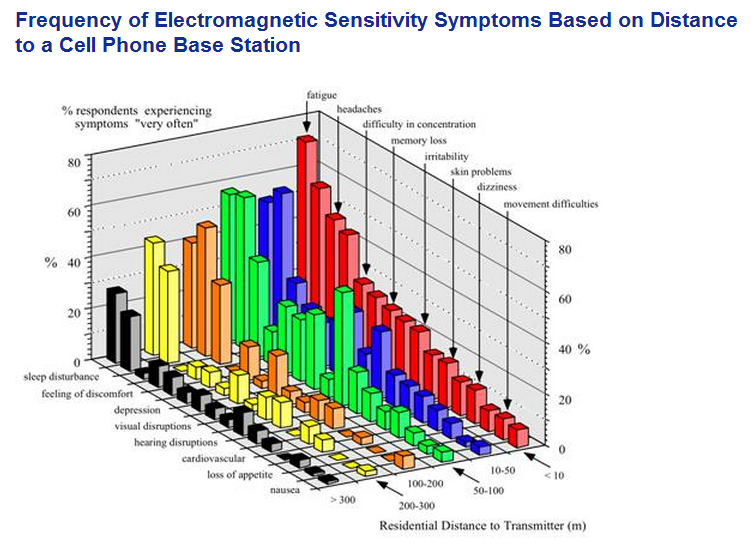Prolonged research
The negative influence of cell towers is being debated in numerous countries worldwide. The extensive spread of these frightful towers evokes a lot of anxiety in public.
The anxiety of people results in numerous researches which are being carried out worldwide. It is important to state that many researchers claim that there is still no 100 per cent evidence that people’s exposure to cell towers is that harmful. However, the majority of scientists state that health risks do exist and more deep research is needed.
What the negative effects are
Admittedly, the main concern of researchers is the link between cell towers exposure and cancer development. Thus, some research proves that prolonged exposure to cell towers leads to serious genotoxic effects on the level of somatic cells which leads to the development of cancer. Notably, the research of the impact of cell phones contributes greatly to the overall research of cell towers negative influences on human health (Pic.1).

Reportedly, radiation from cell phones decreases blood cells ability to “repair damaged” DNA. Another research also states that wireless era has brought such health risks as cancer, Alzheimer’s, Parkinson’s, autism, etc. It goes without saying that if a cell phone exposure causes such serious problems, cell phone tower exposure also negatively influences human health (Pic.2).
Apart from radiation, electromagnetic field and electromagnetic waves produce negative effects on people’s health. In simple words, heating effect of electromagnetic waves is proved to be very harmful for people since it can burn human tissue (of course if it is intense enough). If a person has ever used a microwave oven, he/she can easily imagine possible threats to people’s health.

More so, apart from quite explicit examples of health problems among people who were exposed to cell towers for a long time, it is proved that people are tend to feel cautious about cell towers exposure. Reportedly, people can start feeling worse only if they are told that they were exposed to some electromagnetic waves or field (without being exposed in reality).
Research Limitations
As has been mentioned above many people claim that there is not enough evidence against cell towers. Thus, many scientists argue that it is essential to continue research since at present it is possible to conclude that cell towers do not produce any significant effect on human health. Reportedly, such diseases as cancer have nothing to do with cell tower exposure.
Many scientists claim that the effects of cell tower exposure have not been studied for the necessary amount of time and it is impossible to draw any conclusions. For instance, it is still unclear what effects can cell tower exposure produce on children, or what are outcomes of long exposure to electromagnetic field and waves.
Researchers’ Position
Thus, scientists did not come to the same conclusion as for negative effects of cell towers exposure on human health. However, the vast majority of researchers claim that it is necessary to continue research in this field and at the same time it is important to limit people’s exposure to cell towers.
Conclusion
In conclusion it is possible to state that there is no certain evidence as for extremely negative influence of cell towers on people’s health. However, the majority of scientists suggest that it is necessary to limit the exposure and continue researching the issue.
References
Ahlbom, A., Green, A., Kheifets, L., Savitz, D., & Swerdlow, A. (2004). Epidemiology of Health Effects of Radiofrequency Exposure. Environmental Health Perspectives, 112(17), 1741-1754.
Butler, K., & Ferrara, L. (2008). This Is Your Brain on Cell Phones.Mother Jones, 33, 70-74.
Dolan, M., & Rowley, J. (2009). The Precautionary Principle in the Context of Mobile Phone and Base Station Radiofrequency Exposures. Environmental Health Perspectives, 117(9), 1329-1332.
Johnson, D. (2000). Cell Damage. Vegetarian Times 18-24.
Masley, M. L., Habbick, B. F., Spitzer, W. O., & Stuchly, M. A. (1999). Are Wireless Phones Safe? a Review of the Issue. Canadian Journal of Public Health, 90(5), 325-329.
Tsoukanelis, E. A. (2008). To Call or Not to Call? The Ongoing Cell Phone Safety Debate. E, 19, 40-44.
Valberg, P. A., Van Deventer, T. E., & Repacholi, M. H. (2007). Workgroup Report: Base Stations and Wireless Networks-Radiofrequency (RF) Exposures and Health Consequences. Environmental Health Perspectives, 115(3), 416-424.
Weinhold, B. (2005). A Precautionary Tale: Mental Health and Risk Communication.Environmental Health Perspectives, 113(4), 255.
Wikle, T. A. (2002). Cellular Tower Proliferation in the United States. The Geographical Review, 92(1), 45-62.
Yildirim, M. S., Yildirim, A., Zamani, A. G., & Okudan, N. (2010). Effect of Mobile Phone Station on Micronucleus Frequency and Chromosomal Aberrations in Human Blood Cells. Genetic Counseling, 21(2), 243-251.